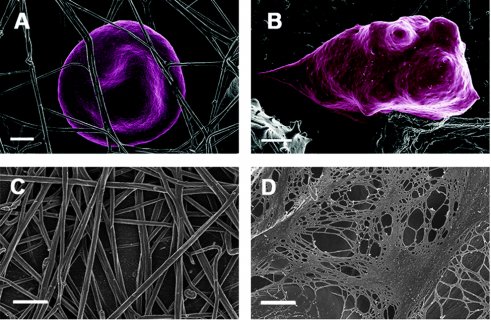
Causes of Oxidative Stress
Oxidative stress has been long known to fuel disease, but how exactly it damages various organs has been challenging to sort out. Now scientists from Johns Hopkins say research in mice reveals why oxidation comes to be so corrosive to heart muscle.
A report on the results, published online May 4 in The Journal of Clinical Investigation, shows that oxidation inside the cardiac cells precipitates heart failure by disrupting the work of a heart-shielding protein called PKG, known to act as a natural “brake” against biological stressors like chronically elevated blood pressure, inflammation and pressure overload. The team’s experiments show that oxidation alters a key part in PKG’s structure, interfering with this natural braking system and diminishing its ability to blunt stress on the heart muscle.
Known triggers of oxidative stress in the heart include heart attacks, choked off flow of oxygen to the heart muscle known as ischemia, smoking and even environmental pollution. Because the new findings unravel some of the mechanisms of damage caused by oxidative stress, the researchers say these insights could spark the development of therapies to halt or slow down the development of heart failure, a condition estimated to affect 23 million people worldwide.
Marked by the gradual weakening, enlargement or stiffening of the cardiac muscle, heart failure culminates in the organ’s loss of blood-pumping ability.
“Our results suggest that precision-targeted therapies that prevent oxidation in key proteins of the cardiac cell could boost self-protective mechanisms and stave off the development or stop the progression of heart failure, ” says senior investigator David Kass, M.D., professor of medicine at the Johns Hopkins University School of Medicine and its Heart and Vascular Institute.
In an initial set of observations, the researchers demonstrated that PKG is indeed oxidized in the heart cells of mice and men. Next, to test how oxidation affects the heart muscle, researchers surgically altered the hearts of mice in a way that forced them to pump harder — a technique that induces heart failure. Mice with normal forms of PKG developed full-blown disease, marked by weakened and enlarged heart muscle. However, animals engineered to have oxidant-resistant forms of PKG had much milder disease, a critical clue that oxidation is a key catalyst in heart disease, the researchers say.
Chemically, oxidization occurs when a molecule loses an electron, or gets “oxidized, ” though despite its name, the reaction does not require a gain or loss of oxygen. Everyday examples of oxidation include metal rust or brown spots on an apple. Biologically speaking, some oxidation is normal. A byproduct of cellular function, it can be an important defense mechanism to thwart infection and kill harmful viruses and bacteria. Under normal conditions, the process is kept in check by cellular antioxidants that mop up excess oxidation. However, when certain cell proteins become highly oxidized, the result is often cell death, tissue damage and, eventually, overt disease.
You might also like











